Dog Recall: How To Teach Your Dog To Come When Called
Teaching your dog to come when called is one of the best ways to keep them safe outdoors. So here's how to get started with dog recall training - and what to do in an emergency, if your dog's dashed off too far to hear you.
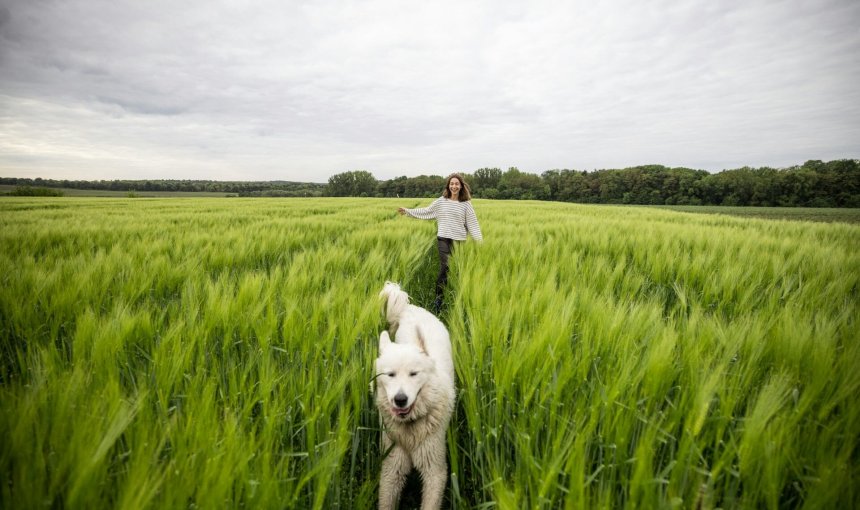
Pop quiz time! What’s the dog command that’s most likely to keep your buddy safe when outdoors? Is it getting them to sit, giving you their paw…or teaching a dog to come? (Aka, dog recall training?)
If you guessed “Come”, you’re on the right track. In fact, around 28% of dog parents in the US alone worry about their dog not coming when calling their name.1
Because when you’re out walking, hiking, or running with your buddy, improving your dog’s recall can help you prevent them from wandering off too far from safety.
(Where there’s no end to the dangers they might face – especially with all the reasons dogs run away.)
But the good news is, dog recall training just needs a bit of consistency and patience. (And tons of pets and praise from you!)
It’s a great way to deepen your bond with your buddy – and also take an active role in their wellbeing and safety.
So in this post we’re going to cover how to teach your dog to come – and what emergency measures you can take if their runaway instincts override their training. Let’s go!
How a reliable dog recall keeps your buddy safe
Teaching a dog to come isn’t just a flex on your buddy’s trainability and intelligence. It’s actually one of the most reliable ways to keep your dog safe when you’re both outdoors.
Because even if you’ve kept your dog firmly leashed, it only takes a moment’s negligence for a hyperactive dog, a runaway dog breed, or an energetic puppy to bolt and dash off, miles away from safety.
⚠️ Around 45% of pet owners worry about their dog slipping out of their leash outdoors.2 Are you one of them?
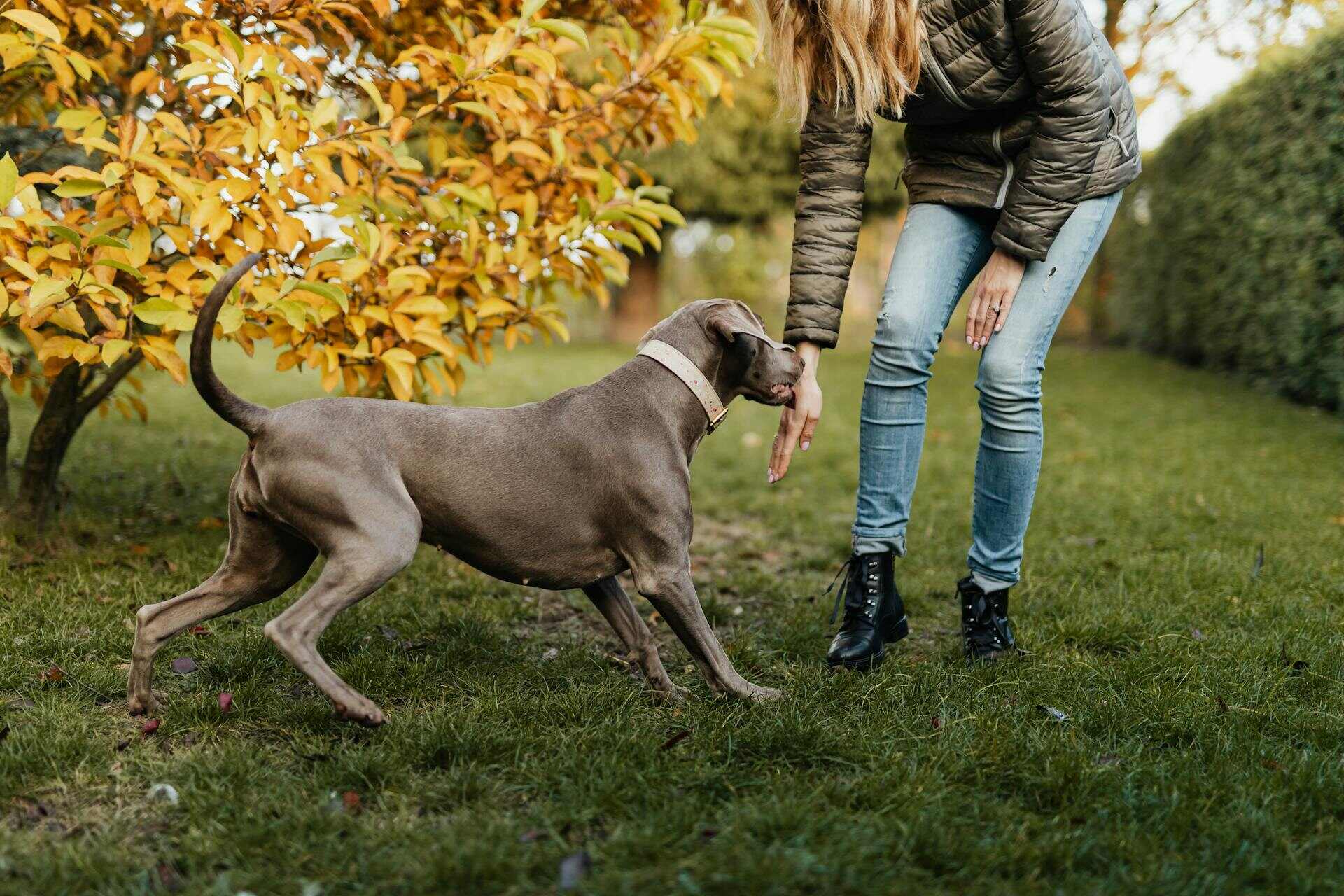
Plus, if you haven’t trained your dog to return to you when you call out, say, “Max! Come!” – your buddy is more likely to end up running off too far for comfort.
Where they might be:
- Injured by a passing vehicle or another pet or predator
- Stolen by a pet thief
- Poisoned from eating something toxic
- Picked up by a nearby shelter (where they might even be euthanized if you haven’t microchipped them)
⚠️ A runaway dog might also end up anywhere between a few blocks away to a 1-10 mile (1.6-16 km) radius.3
In case you were thinking of running them down the next time they get distracted outdoors or run off to investigate some sight, sound, or smell.
So let’s start with some dog recall training basics – and take it from there.
Read more:
- Hyperactive Dog: How To Calm A Hyper Dog
- Runaway Dog: Which Dog Breeds Are Most Likely To Run Away?
- How To Tire Out A Puppy – And Keep Them Safe
- The Guide To Leash Training A Puppy Or Dog
- Dognapping: Pet Kidnapping And How To Keep Your Dog Safe From Dog Thieves
- What Can Dogs Not Eat? 15 Foods Poisonous To Dogs
- The Pet Lover’s Guide to Dog Microchipping
- 7 Essential Tips For Handling The Prey Drive In Dogs
When can you start with dog recall training?
Vets recommend you get started with recall training as early as possible.
So if you’ve just adopted a puppy (around 8 weeks), it’s best to train them to respond to commands like “Come!” and the sound of their name immediately.4
Just adopted an adult or senior dog? Now’s as good a time as any to revisit their recall training. (Or start from scratch, if necessary.)
In both cases: be prepared to invest time, patience, effort, and consistency.
- Puppies might seem “easier” to train – but they’re also easily distracted, highly energetic, and need more time to pick up on cues.
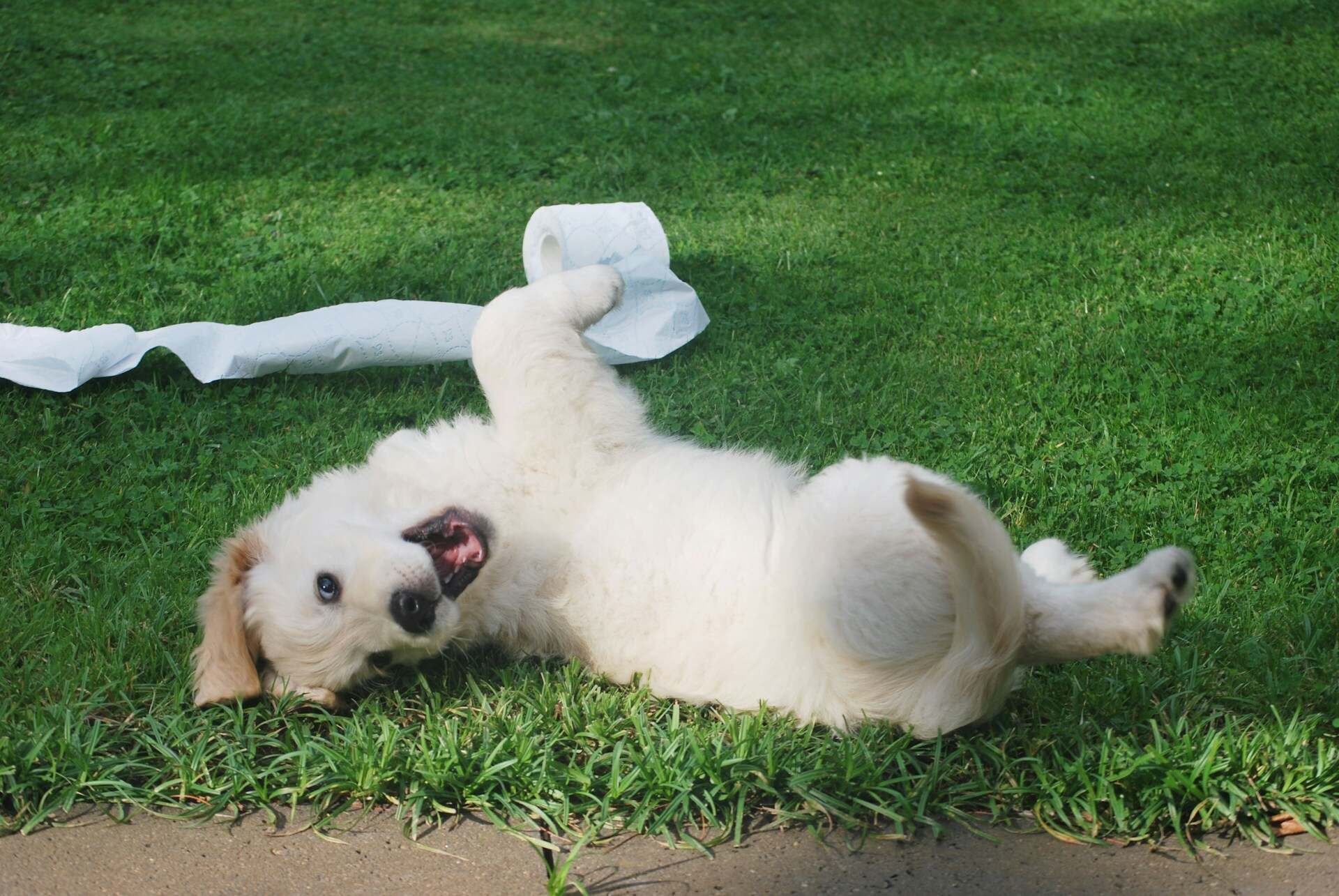
- Adult dogs might have more established habits and temperaments. So you’ll have to adapt your training to what they might be used to from their past experience.
- Senior dogs might suffer from hearing difficulties in their older years. So besides your voice, experiment with some other sounding devices (like high-frequency whistles) that they might hear more easily.

How to teach your dog to come: Getting started
Here are the basic steps to training your dog any behavior – but specifically how to return to you when you signal them.
Help your dog learn that coming to you = pats & praise
Even before you start teaching your dog to come when called, you need to help them understand that when they come to you, it’s a good thing.
(Aka, a “good” behavior that comes accompanied with rewards – like pats, praise, and tons of cuddles.)
Because, think about it: why would your dog return to you every time if you just ignore them or don’t acknowledge their behavior?
💡Rather, if you reward them every time, they’ll learn that returning to you when called means getting rewarded somehow. (And that they should keep doing it.)
So start simple in a familiar environment where they won’t be distracted easily. For example, you could:
- Walk around your home or backyard with one of your dog’s favorite toys.
- Get your dog’s attention by squeaking or shaking the toy. (Don’t call out for them yet.)
- Your dog might not respond immediately, but keep at it until they come to you. (All the way to you – not just within sighting range!)
- When they do come to you, reward your dog by patting them, praising them, or playing with them.
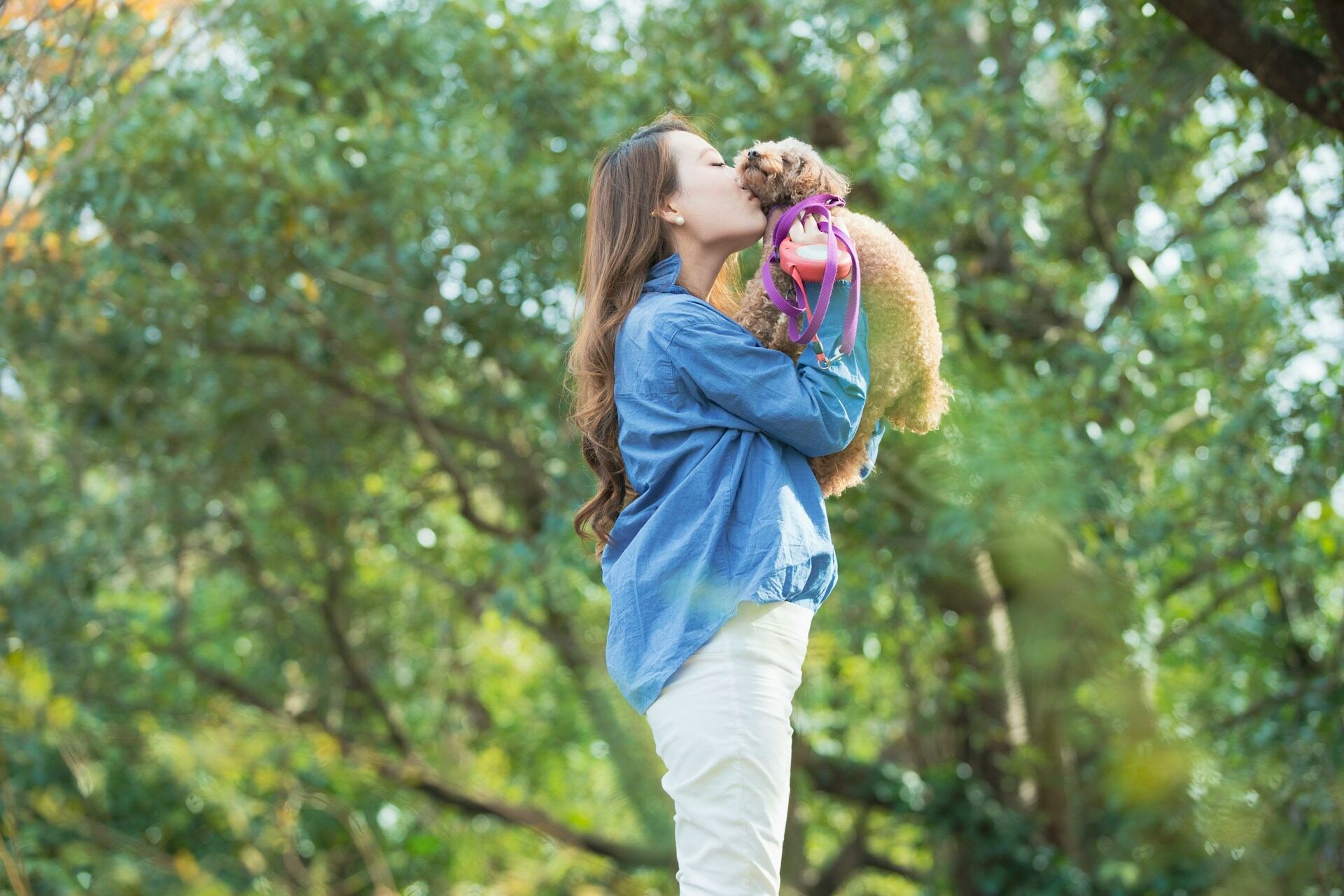
This helps your dog gradually learn that coming to you = a good thing that they should do every time.
- With time, take a few more steps away and squeak or shake the toy to get your dog to come to you from a slightly further distance.
- Now, whenever they come to you for their “reward”, start saying “Come!”.
- Remember to keep your voice around the same pitch and tone (and ideally cheerful.)
Practice these steps regularly (and more frequently in the beginning) to help your dog improve their recall.
With time, practice in different environments (like a nearby park) to help your dog build a more reliable recall.
You could also combine recall training with a fun game like hide and seek to help your dog use their senses to find you behind a tree or even inside your house.5
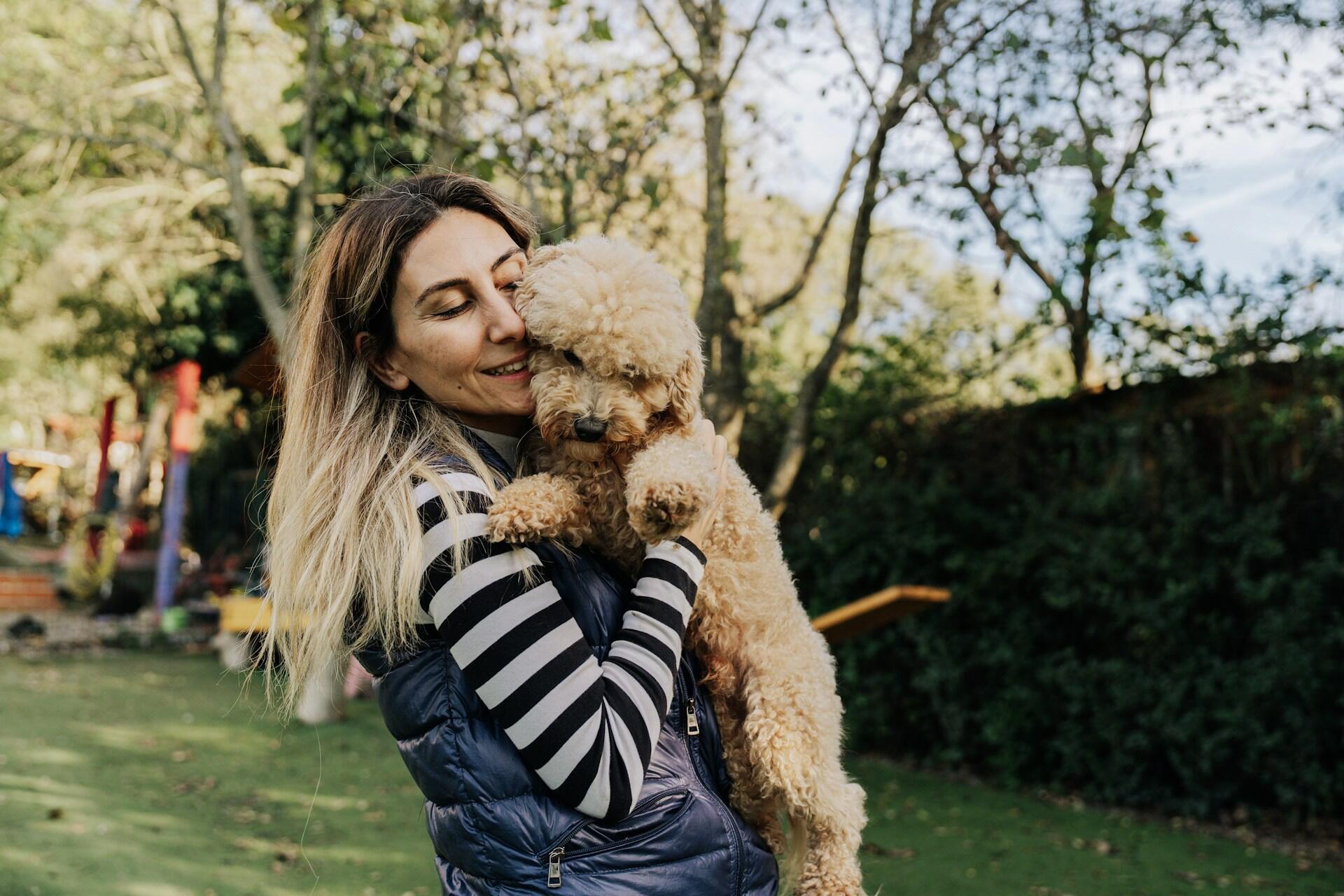
⚠️ Stay patient with your dog throughout this process. It can take weeks or months of practice before they respond reliably to you calling out for them.
Pick a consistent stimulus (or sound)
With time, do you necessarily need to always call out “Come!” to get your dog to return? Not really.
In fact, your voice might vary depending on how much of a rush you are, whether you’ve got a cold, the wind and weather…you get it.
Which is where a sounding device like a clicker or whistle can come in handy over the long run. (Because they tend to sound the same no matter where you use them, right?)
What’s important is to use this sound consistently throughout training. With time, it’ll become your “cue” for training your dog a specific behavior.
I.e., the sound of the click (or your voice) = the prompt for a certain behavior = reward = good thing.
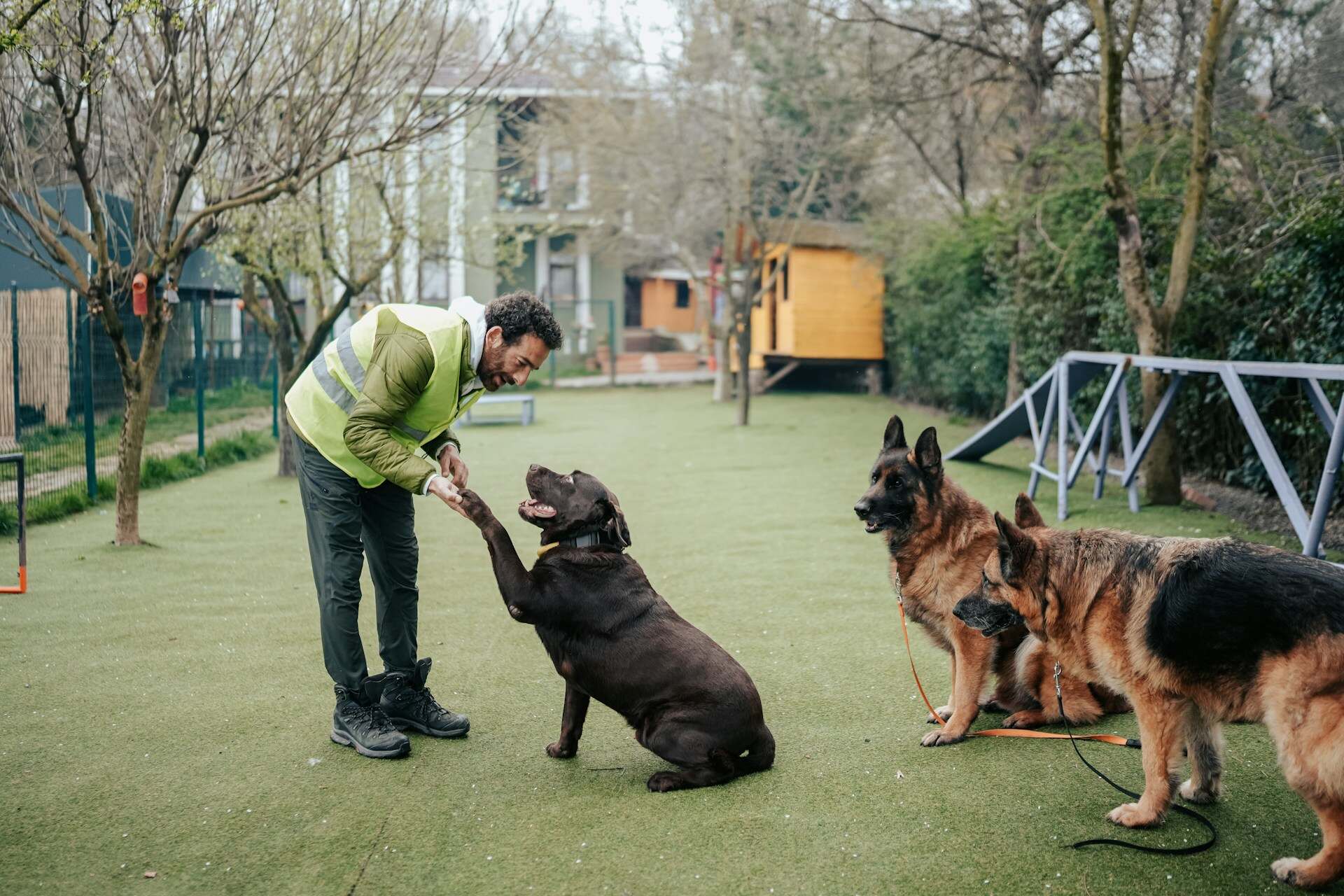
This audible cue helps your dog understand that they have to perform a certain behavior in order to get their “reward”.
Plus, it’ll help them learn that they won’t necessarily be rewarded every time they come to you – only when they’re called.
- So if you’re planning on vocalizing “Come!” to train your dog, just make sure you use more or less the same tone and pitch.
- Besides that, you could also use a whistle or a clicker that tend to make the same kind of noise, no matter where you use them. (So a bit more reliable than your voice.)
- Just make sure you get your dog used to the sound first, so you can be sure it won’t spook them instead.
💡 Dogs respond well to positive reinforcement-based training methods like clicker training, which specifically use a clicker to signal “Good!” when they perform a certain behavior.
It’s widely used to train working dogs, service dogs, and even police dogs around the world.
Read more: Clicker Training for Dogs: A Step-by-Step Guide to Positive Reinforcement
Use a harness, leash, or line during training
Vets recommend training your dog with a harness, leash, or long line in tandem.
They can act as a “safety belt” if a high-energy puppy or active dog breed doesn’t respond immediately when you call out, “Come!”7 (And just keeps running around or remains distracted instead.)
- Just make sure not to pull your dog by their leash when you call them to return to you. (It’ll just make them resist.)
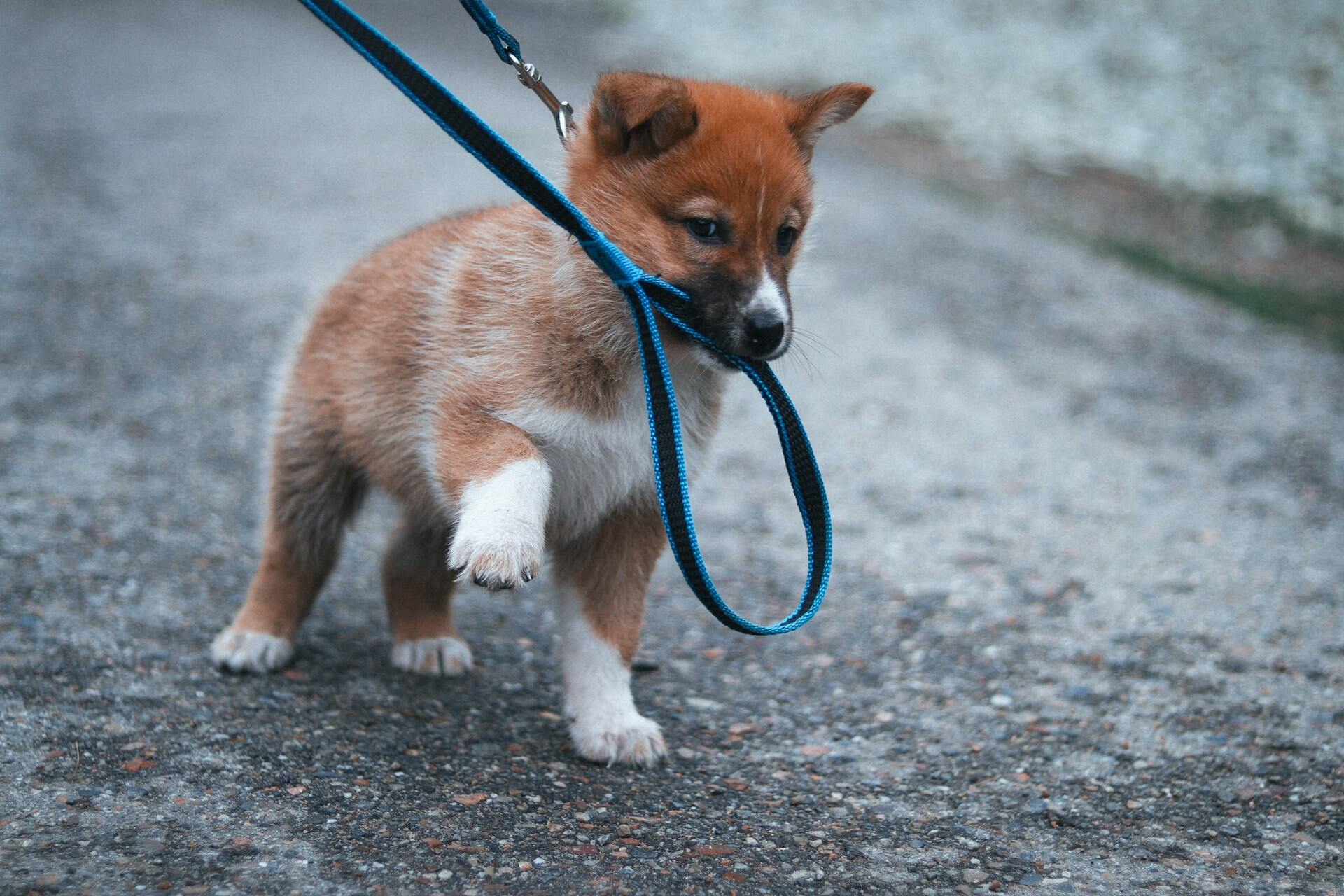
- Rather, if you use a long line instead, you can just step on it to gently tug your running dog back in place.
Stay consistent with training
Dog recall training is all about consistency. And importantly: you want to ensure your dog doesn’t expect a treat every time they just come to you. (Rather, only when you call them, right?)
- So if your dog comes to you without you having called them, smile and interact with them. (Just don’t give them the treat or “reward” they’re used to.)
- But if they come to you when called, make sure to reward them consistently. (Whether with a treat or an extra game of tug of war.)
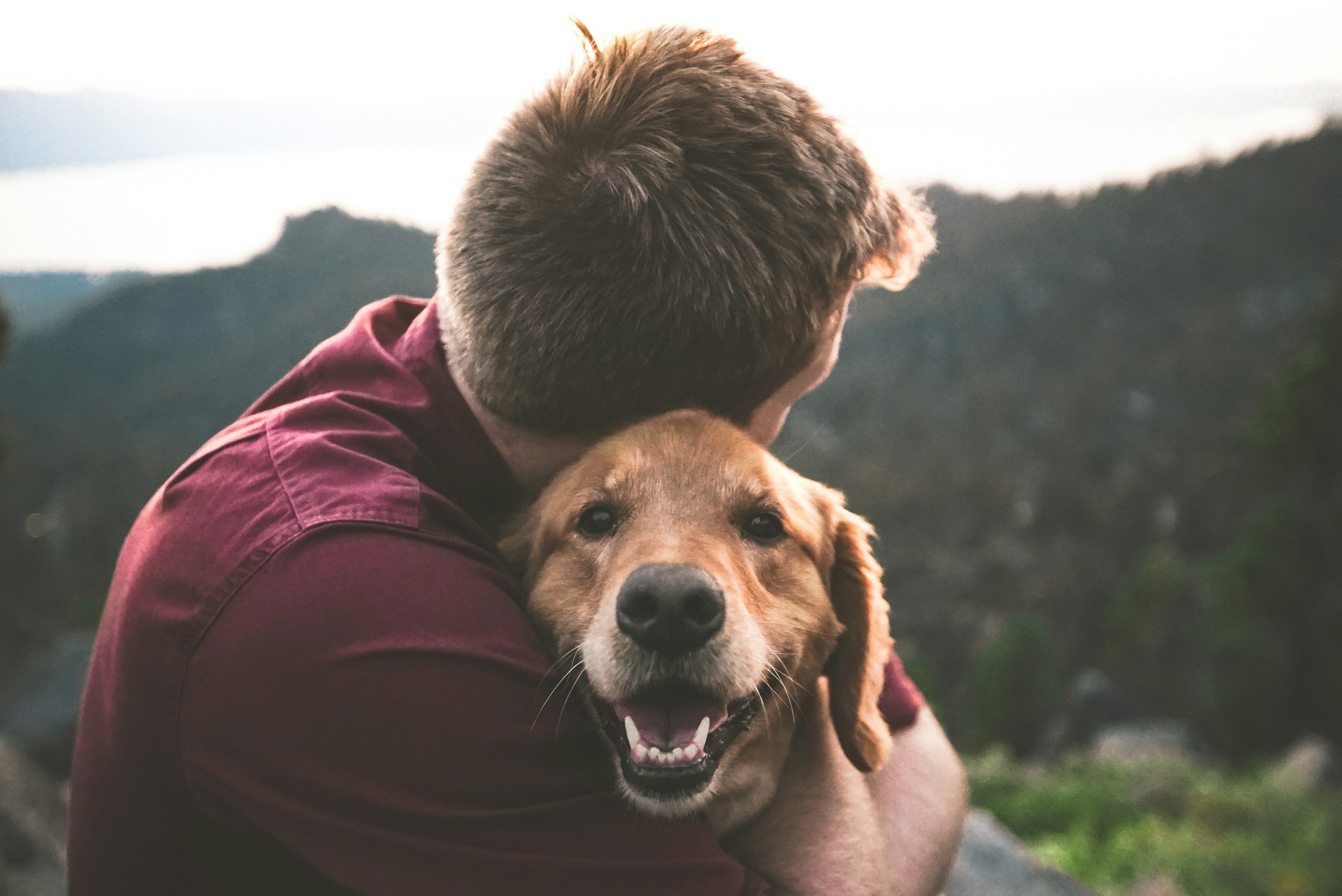
⚠️ Just make sure not to overdo it with the treats – you do want to avoid overfeeding your dog! It’s always a good idea to switch up treats with play sessions or some extra quality time together.
More recall training best practices
- Duration. Training sessions are always better off short and sweet – but also regular. Just 10-15 minutes a day can be enough to build a good habit.
- Focus on one command a day. Any more and you might end up confusing your dog or giving them mixed signals.
- Got a multi-dog household? It’s best to train them one at a time.
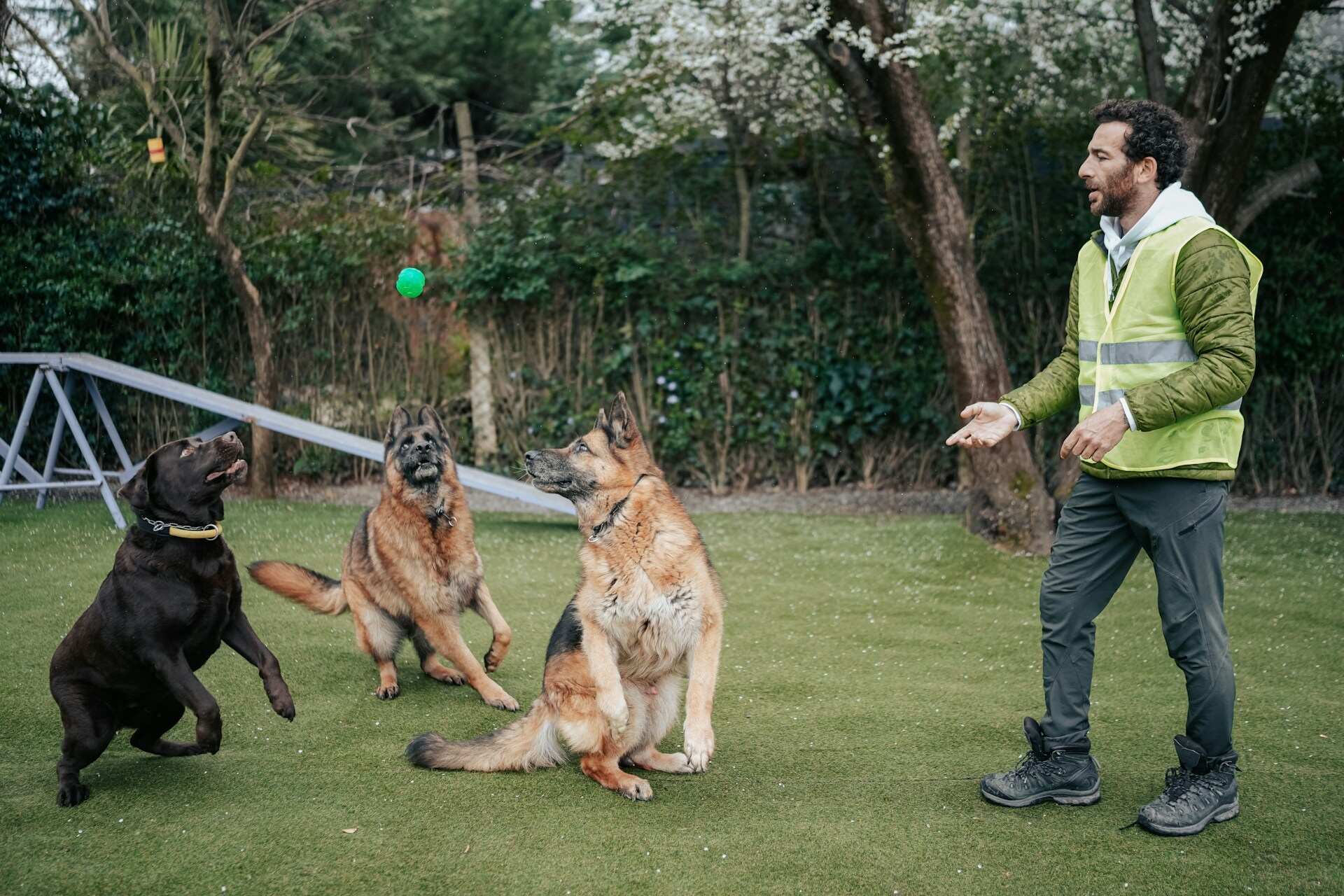
- Stay patient and don’t scold or yell at your dog if they don’t comply. You’ll just frighten your dog and make them less likely to follow your lead.
- Combine your training sessions with some play time. So if you’re, say, leaving the room to teach your dog to come – your poor dog might just learn that “training = alone time!”
Because in the end, recall training is all about building trust.
So with short, consistent, safe sessions together, it’ll help your dog learn why they should return to you when you call them.
Which, in the long run, can help keep your dog safe when you’re out adventuring together.
But here’s the catch…
Even the most well-trained, well-disciplined dog can fall prey to their own instincts. And even vets admit that no recall is perfect.8
So besides keeping your dog on a leash outdoors, make sure you periodically revisit their recall training. Which can help prevent them from running out on a street with passing vehicles – or bolting off into the woods after a woodland animal.
But what if your dog has slipped out of their harness or you’ve lost control of their leash – and is now bounding down the road or forest path, too far away to hear the sound of your voice?
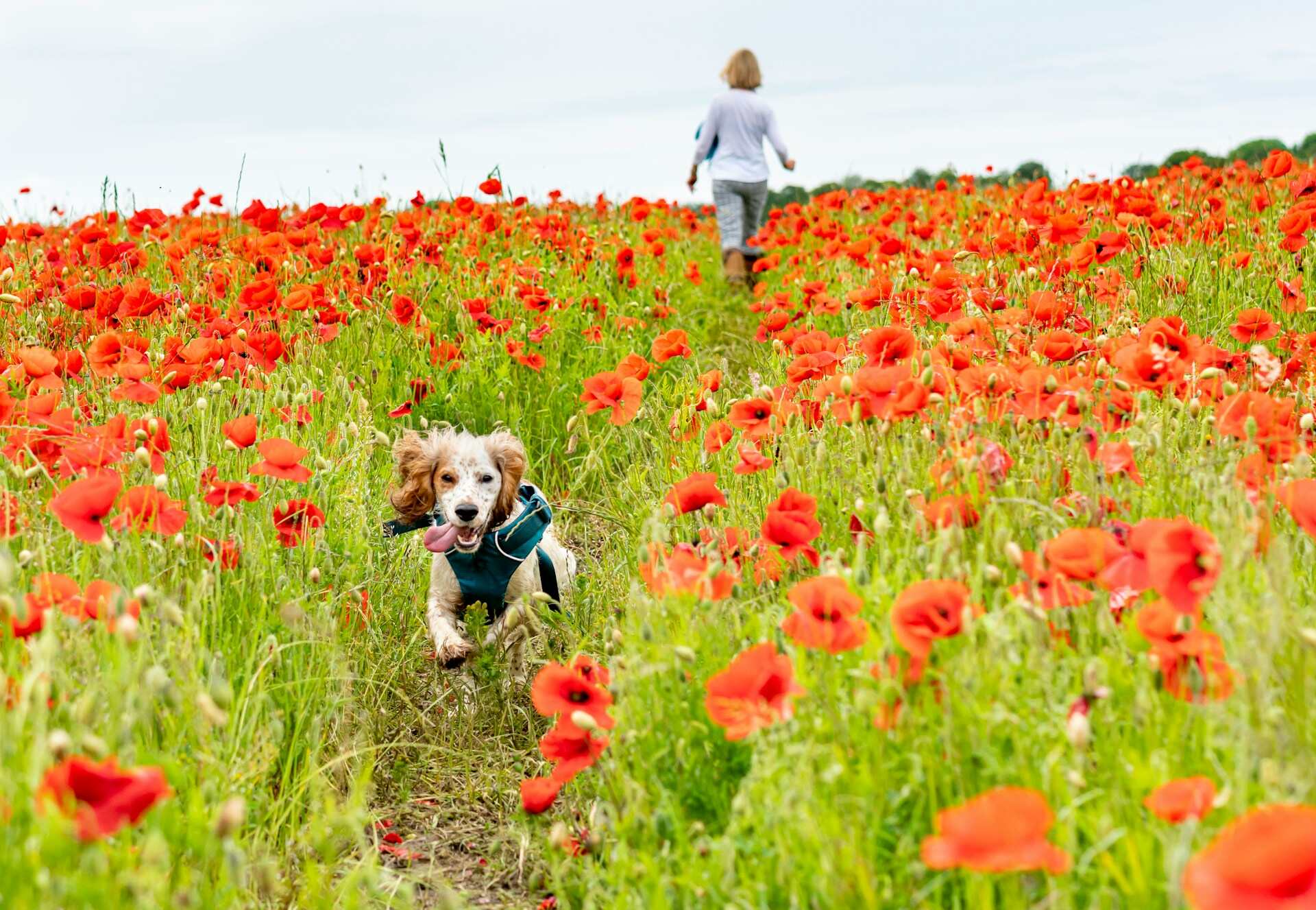
Now it’s time for emergency measures.
Plan ahead for an emergency
Dogs run away for all sorts of reasons: curiosity, sniffing out a female in heat nearby, chasing down a woodland animal by instinct…and sometimes just plain boredom!
This applies no matter how well-trained or “chill” you think your dog is. So it always makes sense to plan ahead for an emergency.
And while it’s always a good idea to keep them leashed, some bigger or particularly motivated dogs might end up wriggling free from your grip anyway.
(Or a smaller one might sneak off the minute you’re not looking. Plus, since they’re small, they’re also easier to miss.)
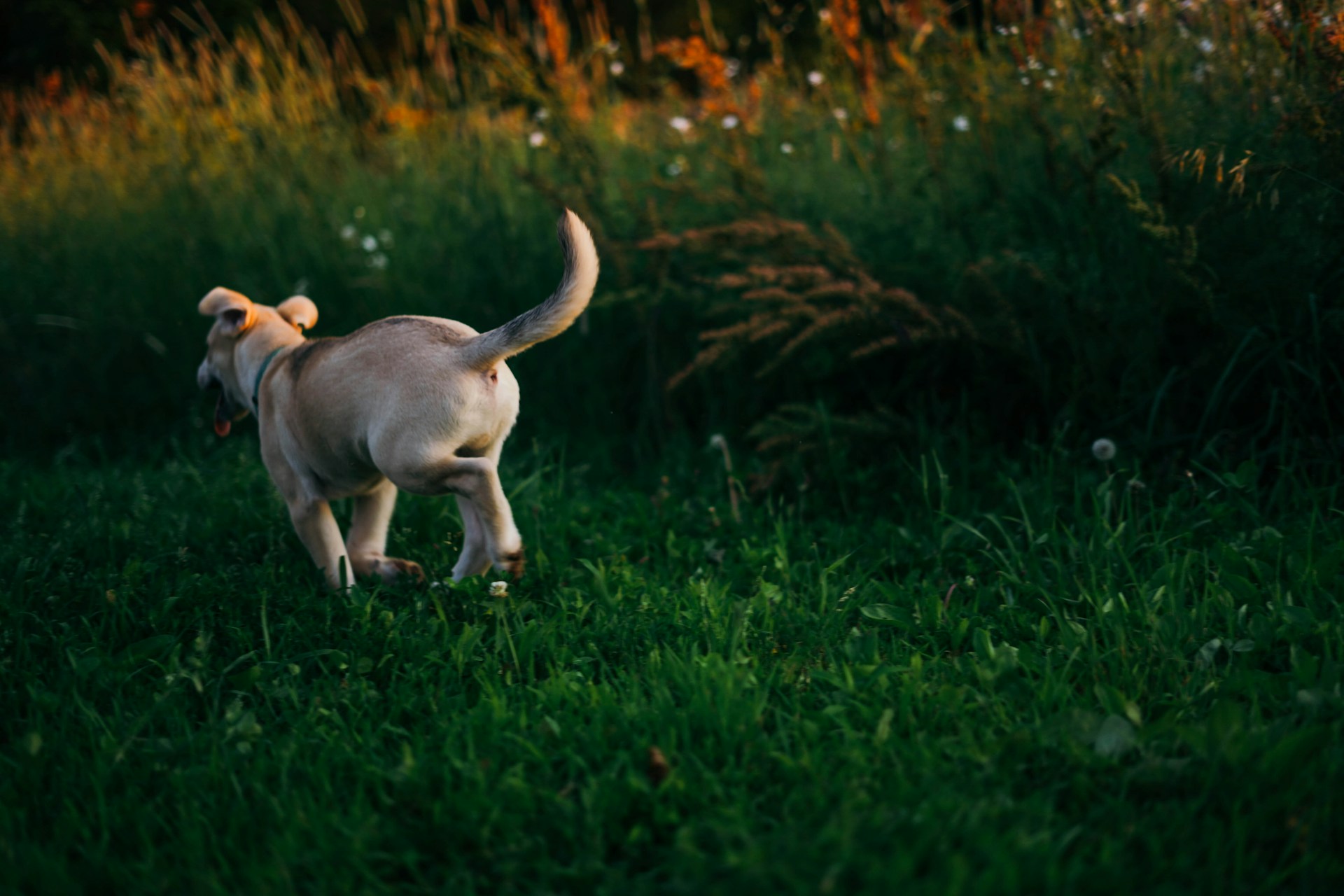
Which is why we’d always recommend escape-proofing your dog for your outdoor adventures. Besides recall training, make sure you:
Get your dog microchipped
A microchip is like a permanent ID tag for your dog. A vet can painlessly implant one between your dog’s shoulder blades in less than 10 minutes – plus, it’s a widely-available and affordable option in most community centers around you.
With a microchip, your lost dog now has the chance of a helpful stranger taking them to a vet or shelter – who can scan your dog for a microchip. (And your contact details, which you can add to the national microchip databse.)
Then, they can contact you to inform you they’ve found your lost dog.
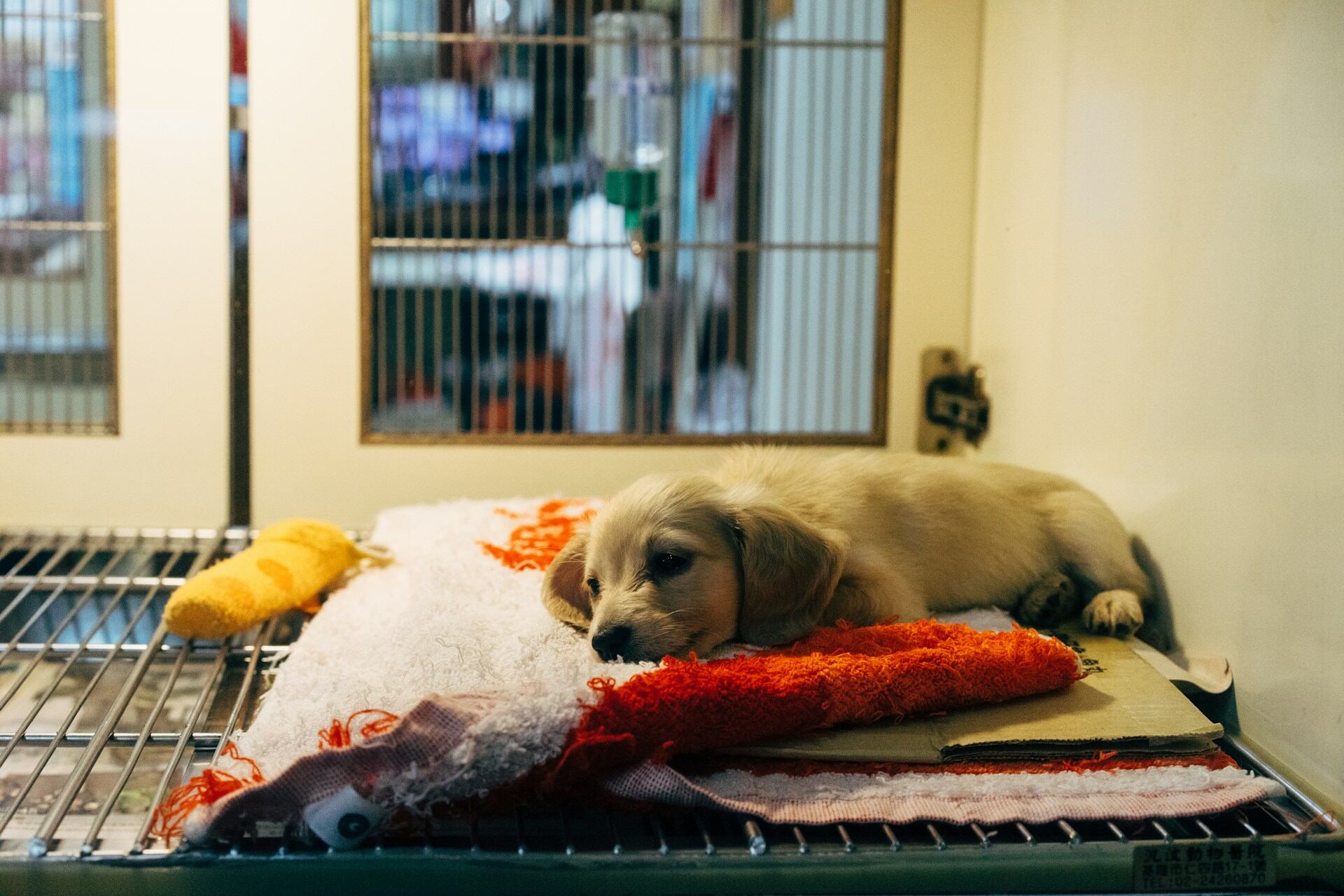
Besides this, a dog ID tag with your contact details is also a good option – though there’s always the risk it might fall off, get damaged, or lost.
So make sure to include one along with a microchip for extra safety.
Just remember…
⚠️ A microchip can only help someone else identify your dog.
It can’t help you actually track down your dog in real-time or send you an escape alert if your dog’s jumped the fence or been dognapped.
(That’s where a dog GPS tracker can be a lifesaver instead.)
And in an emergency, this would mean you can’t take an active role in actually finding your dog by yourself.
Instead, you’ll have to wait helplessly and hope someone (who isn’t a pet thief) picks up your dog – and then actually contacts you. (Without demanding an exorbitant finder’s fee.)

Which is why it makes sense to…
Invest in a dog GPS tracker
With a dedicated dog GPS tracker attached to your buddy’s collar, you can track down a running dog with just a glance at your phone.
How come? Well, it’s because you now have a whole sky full of satellites helping you:
- Track your runaway dog
- In real-time
- And over an unlimited range.
It’s why dog parents around the world are investing in Tractive’s life-saving technology – as an extra layer of security to their recall training:

Plus, when just a microchip might not give them the 100% peace of mind they need:
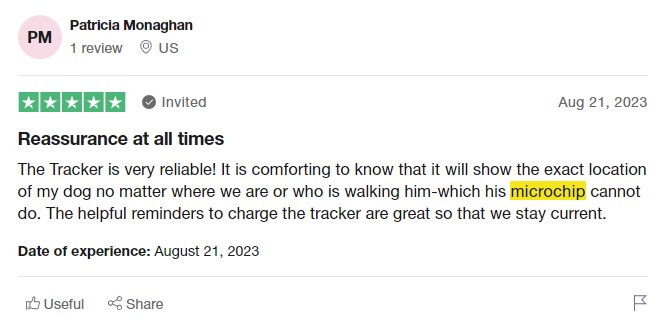
So when it comes to an excitable, easily-distracted puppy or a senior dog who might not even hear you calling for them…why leave things to chance?
Because as it turns out, following your dog’s every step could be your key to finding them safe and sound – or potentially never seeing them again.
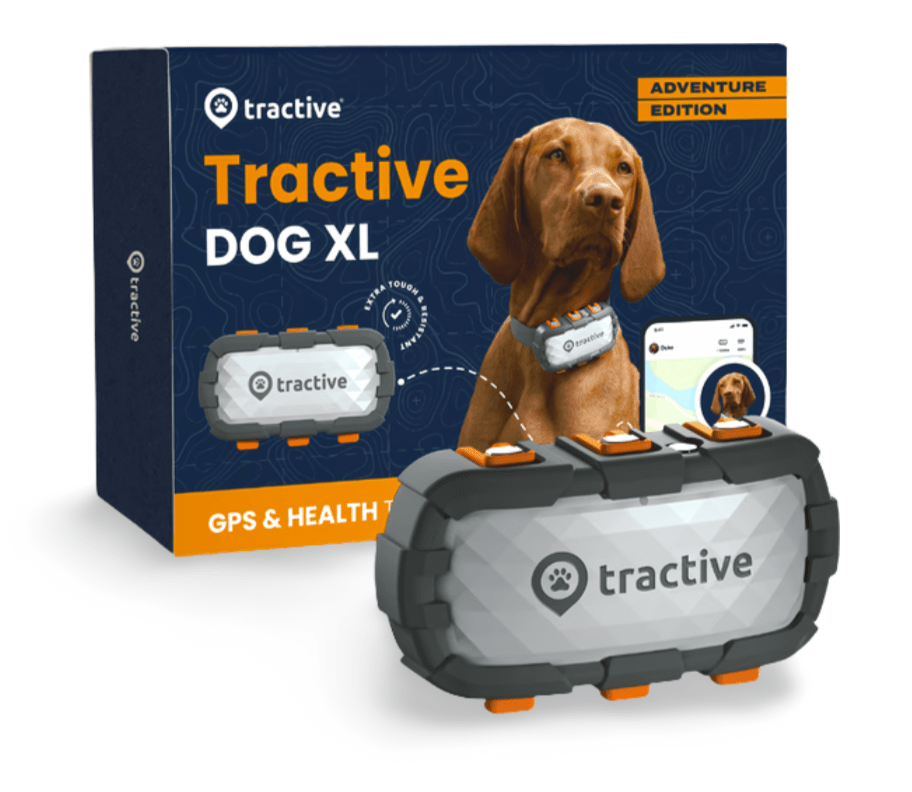
Always know where your dog is
Follow every step in real-time with unlimited range. Get alerts if they wander too far. Keep them happy & healthy with Wellness Monitoring. And let others – like walkers or sitters – keep an eye on your dog too.
Practice your recall training with escape alerts
Even if you set up an expensive physical fence around your backyard, your dog might still jump it or dig under it to escape.
But with a dog GPS tracker, you’ll no longer need to monitor your dog’s whereabouts 24/7.
How? Because once you’ve set up a “safe zone” around your property, you can kick back and relax – and let your trusty Tractive Virtual Fence track your dog’s location for you.
Now the minute your dog tries to sneak past the safe zone, you’ll get an instant escape alert.
Aka, the perfect time to practice your recall training – and intercept your dog, mid-escape, if necessary.
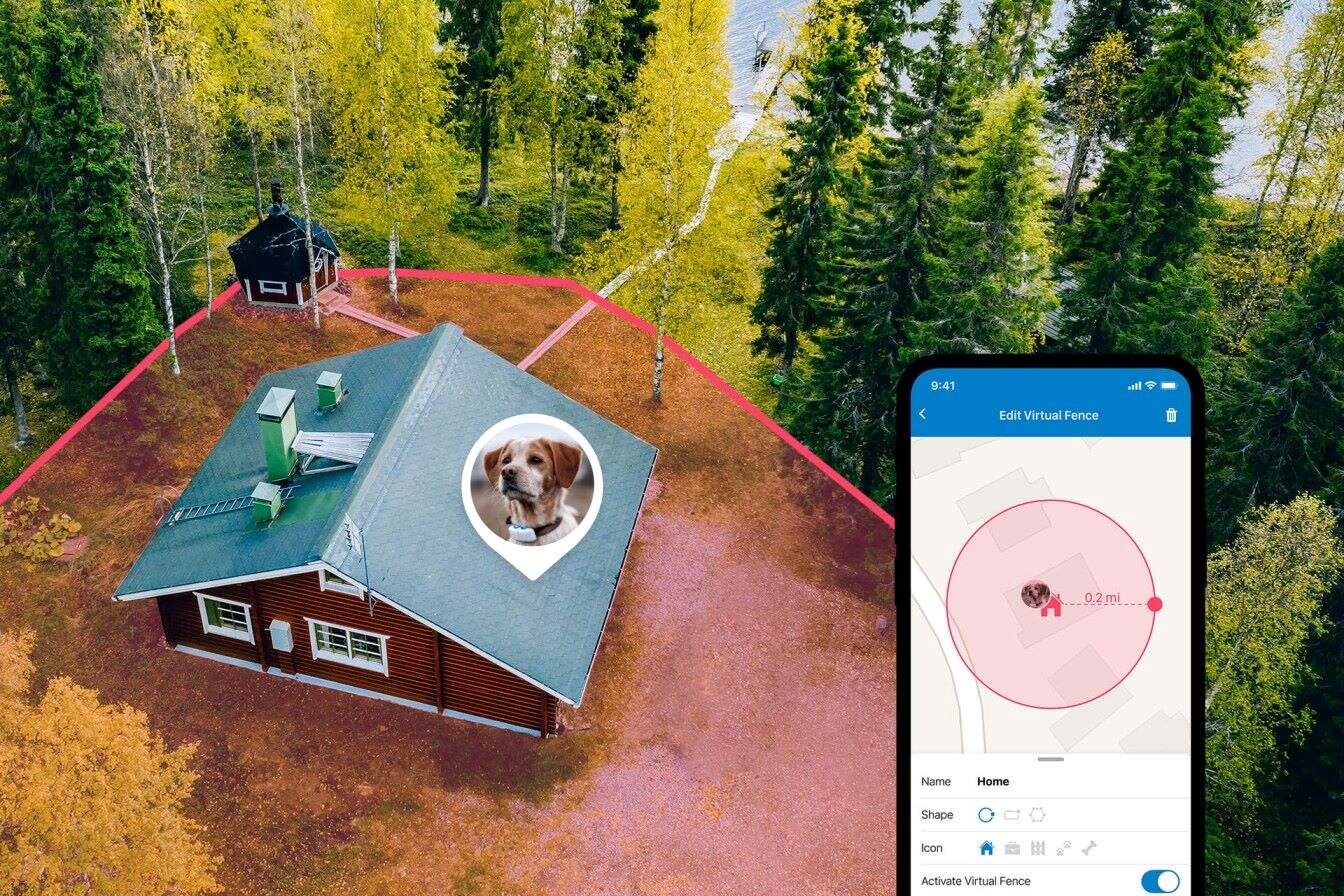

“A Virtual Fence is a continuously monitored area that you, the user, create. You can easily move or resize it while still sitting on your couch.
Once you’ve defined a specific area, your Tractive GPS starts monitoring it. As soon as your tracker picks up that your pet is outside a safe zone or inside a danger zone, the system immediately detects a change in the area it’s monitoring.
Which means you’ll get a notification right away – so you can intervene and prevent your pet from wandering too far.”
– Ivelin Nenkov, Embedded Systems Engineer at Tractive since 2016
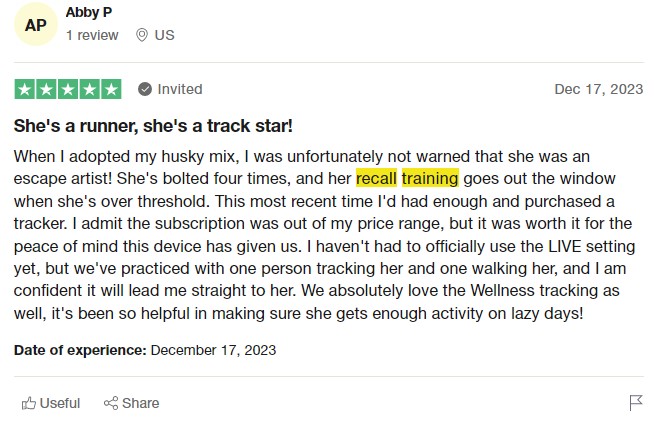
Adventure off-leash – with 100% peace of mind
In fact, relaxing while on the go with the dog is how Clare, a Scottish dog parent, travels through the countryside with her off-leash Samoyed, Sally.
And of course, like any loving dog mom, she worries about Sally running off all the time as they adventure through Scotland’s beaches, mountains, and moorland.
In her words:
“There’s always that fear, ‘What if I lose sight of her, how will I call her back?'”
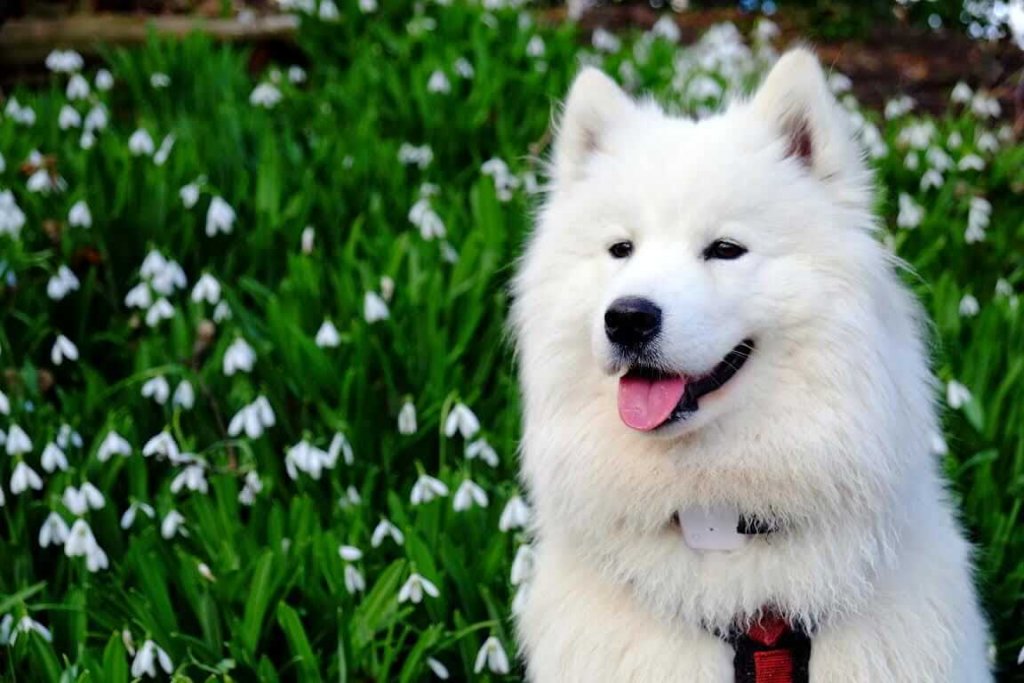
“If she’s heading away from me, I whistle loudly to attract her attention before she goes out of hearing range.
She’ll happily come running right back as she knows she’ll be rewarded with a hug and a tasty treat.“
“To us, Sally wearing her Tractive GPS means she spends less time leashed and has more time for off the leash play, which means a happier and more thoroughly exercised pup.
Plus, all the extra opportunity we have to practice “come back” has led to Sally having more dependable recall.
This means she can now be safely allowed off leash in new and unfamiliar places.“
– Clare & Sally, Scotland
Read more: Off the leash: Safer travelling with Tractive GPS
Adventure Off-Leash With Tractive
How to teach a dog to come – and stay by your side, safely
Any dog can fall prey to their runaway instincts. (No matter how well-trained, disciplined, or low-maintenance you think they are.)
But if you’re consistent, you can improve your dog’s recall by leaps and bounds – and keep them safe when you’re off adventuring outdoors.
So make sure to:
- Start early. Teaching your dog how to come to you is one of the first safety commands you should teach them.
- Start slow. Help your dog first learn that coming to you is a positive experience. Over time, start vocalizing “Come!” when they approach you, to help them associate the command with your expectation.
- Use a consistent stimulus or sound while training. Your voice might vary – but a sounding device like a whistle or a clicker will make the same sound consistently. Plus, it might benefit a hard of hearing senior dog or an easily distracted puppy.
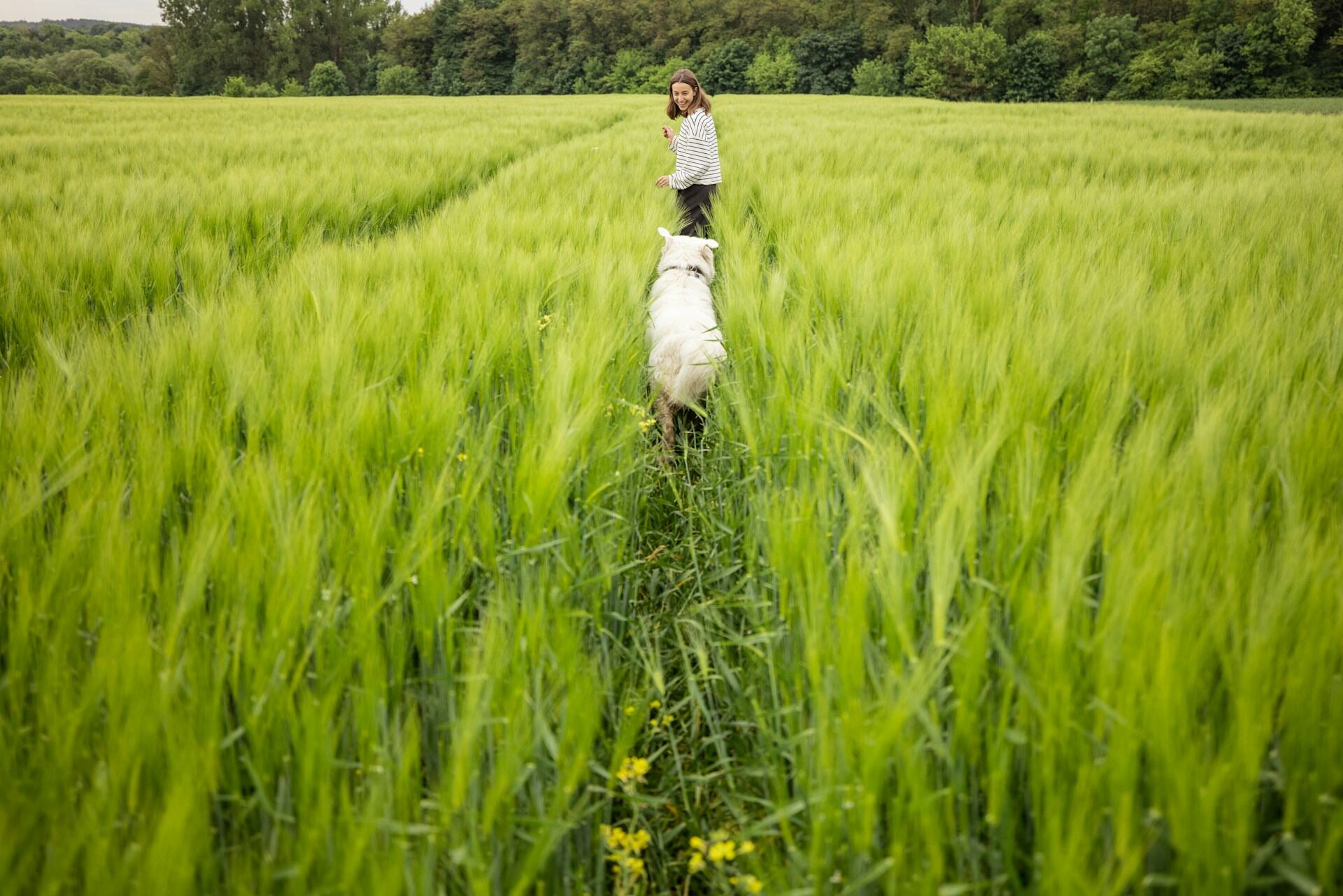
- De-condition your dog against simply approaching you without being called. You don’t want your dog to learn that simply coming to you – without being called – means you’ll reward them.
- Reward your dog consistently when they comply with your commands. (I.e., coming to you only when you prompt them, “Come!”)
- Keep your training sessions short and focus only on one command at a time.
- Make sure to train your dogs one at a time if you have many at home.
And most importantly…
Plan ahead for an emergency – by ensuring your dog has a microchip and ID tag, as well as a GPS tracker to help you follow their every step.
For when your recall training needs an extra layer of security – which may even end up saving your dog’s life.
Because when it comes to our furry friends, it’s always worth going the extra mile for their safety – and for your peace of mind.
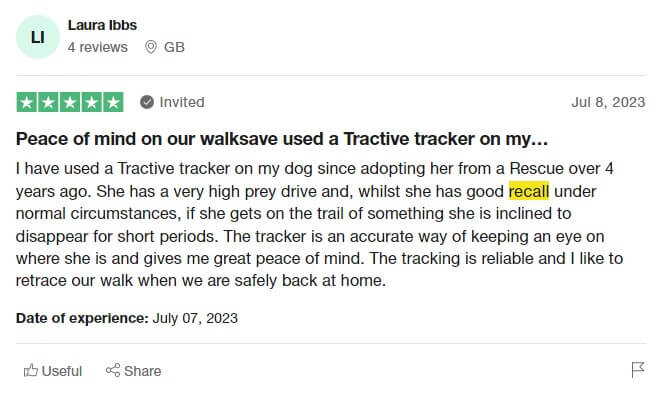
Getting started with teaching your dog how to come to you when called can be tricky – so here’s dog trainer, Robert Cabral, with some tips on how to improve their recall:
And if you’ve liked this post, share it with a friend or loved one – and let’s build a safer, kinder world for our furry friends together.




